info@gerb.com
Upgrade of a Hotel in Sofia with GVWD
From a two story high class hotel to a two plus seven story luxury residence with GERB Viscous Wall Damper for increased earthquake protection.
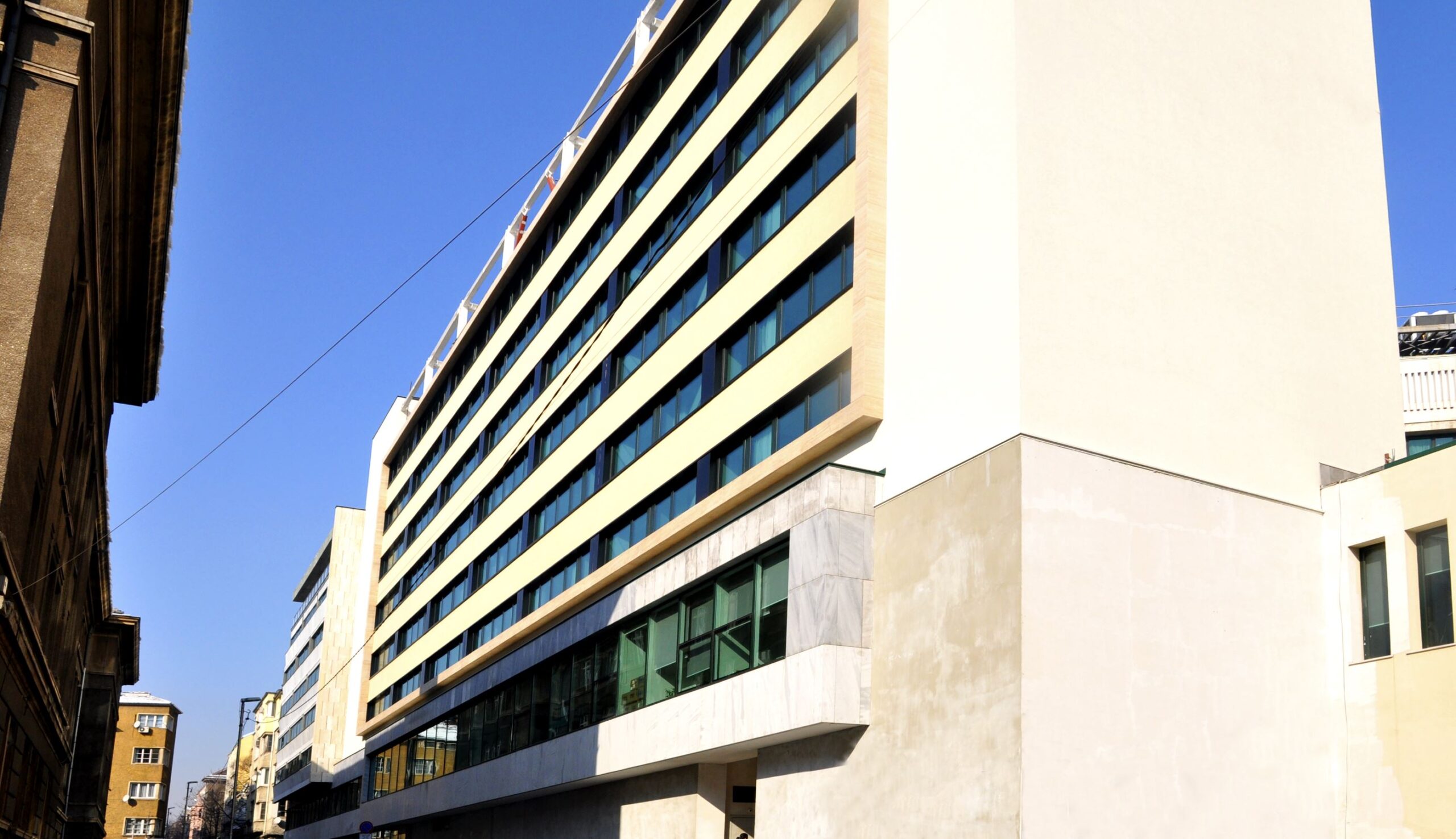
The hotel in Sofia, Bulgaria, is a modern establishment with stunning views of the renowned Alexandar Nevski Cathedral, overlooking the Narodno Sabranie Square. Positioned at the heart of the Bulgarian capital, the hotel boasts close proximity to key government buildings, cultural landmarks, and convenient access to the business district.
Originally constructed in the 1960s as a two-story hotel with a reinforced concrete frame structure, the hotel owner sought to upgrade and expand its bed capacity by adding a seven-story steel structure. However, the seismic standards mandated thorough investigations of both the new and existing structures to withstand earthquake loads.
More information can be taken from: http://www.yoda-bg.com/portfolio/radisson-blu-grand-hotel/nggallery/page/1
Challenge
The primary challenge faced during the luxury upgrade project was the need to reduce seismic forces acting on the existing structural members. The original building lacked detailed seismic investigations, making it necessary to address the seismic safety of the new and existing structures. The existing columns required reinforcement, but the available space for local reinforcement measures was limited. Moreover, the addition of vertical steel connections and reinforced concrete jackets to strengthen the structure was restricted due to space constraints.
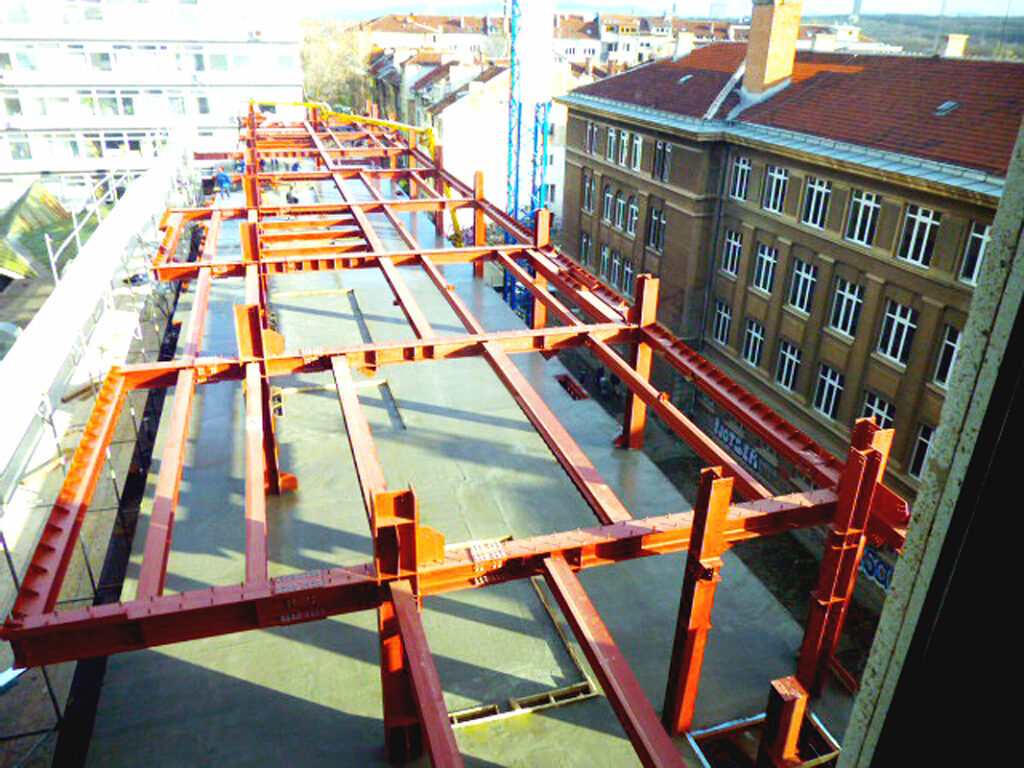
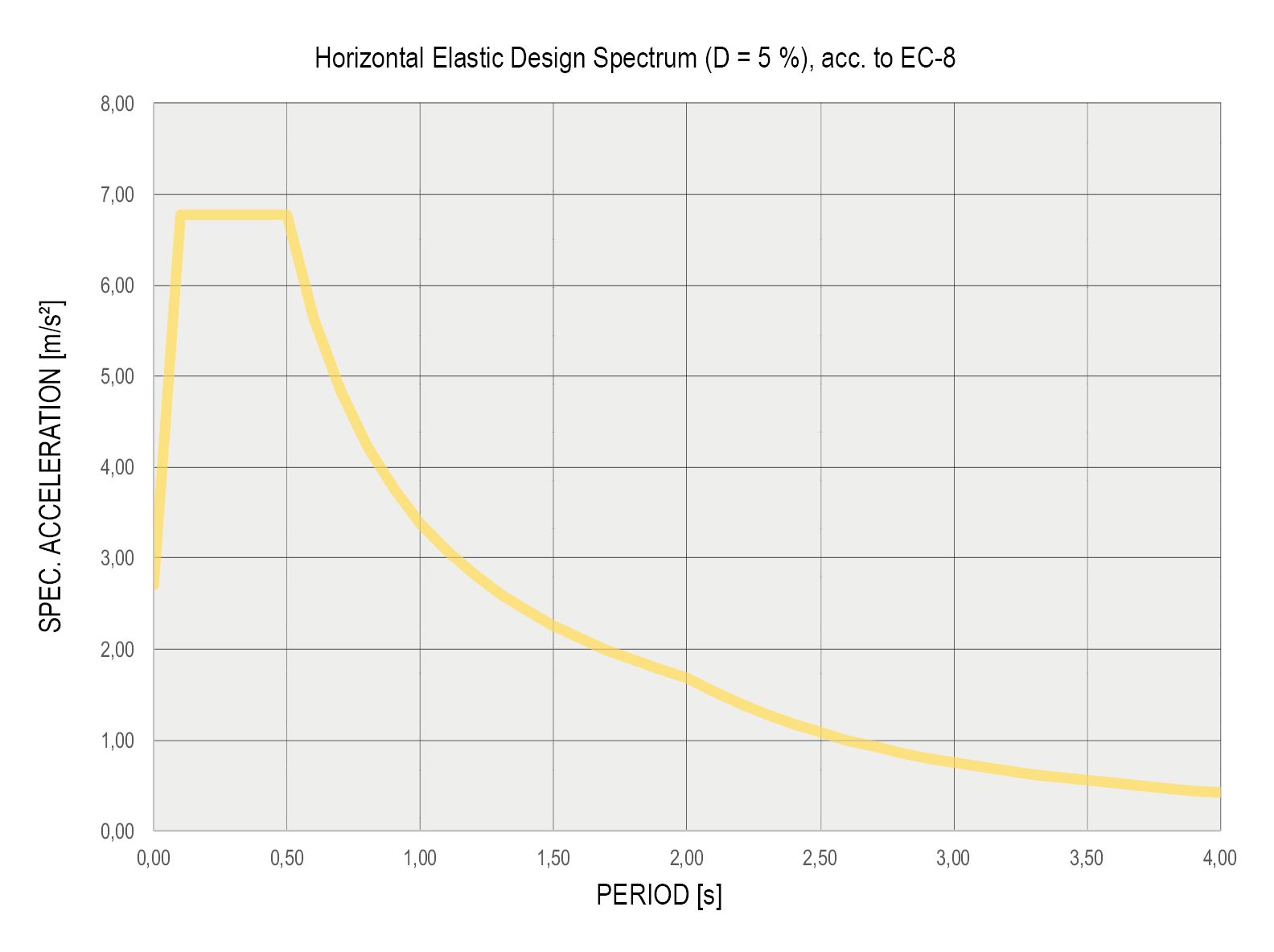
Solution
The project team proposed an innovative solution to enhance seismic behavior and reduce seismic forces. Firstly, vertical steel connections were integrated into the existing reinforced concrete frames. This approach was presented in [1]. Additionally, the main columns received additional reinforcement through reinforced concrete jackets. However, due to limited space for these retrofitting measures, it was challenging to achieve the desired level of structural stability.
Technical Facts:
Structure: Steel construction
Vibration source: Seismic
Solution: 21 GERB Viscous Wall Damper
Completion: 2016
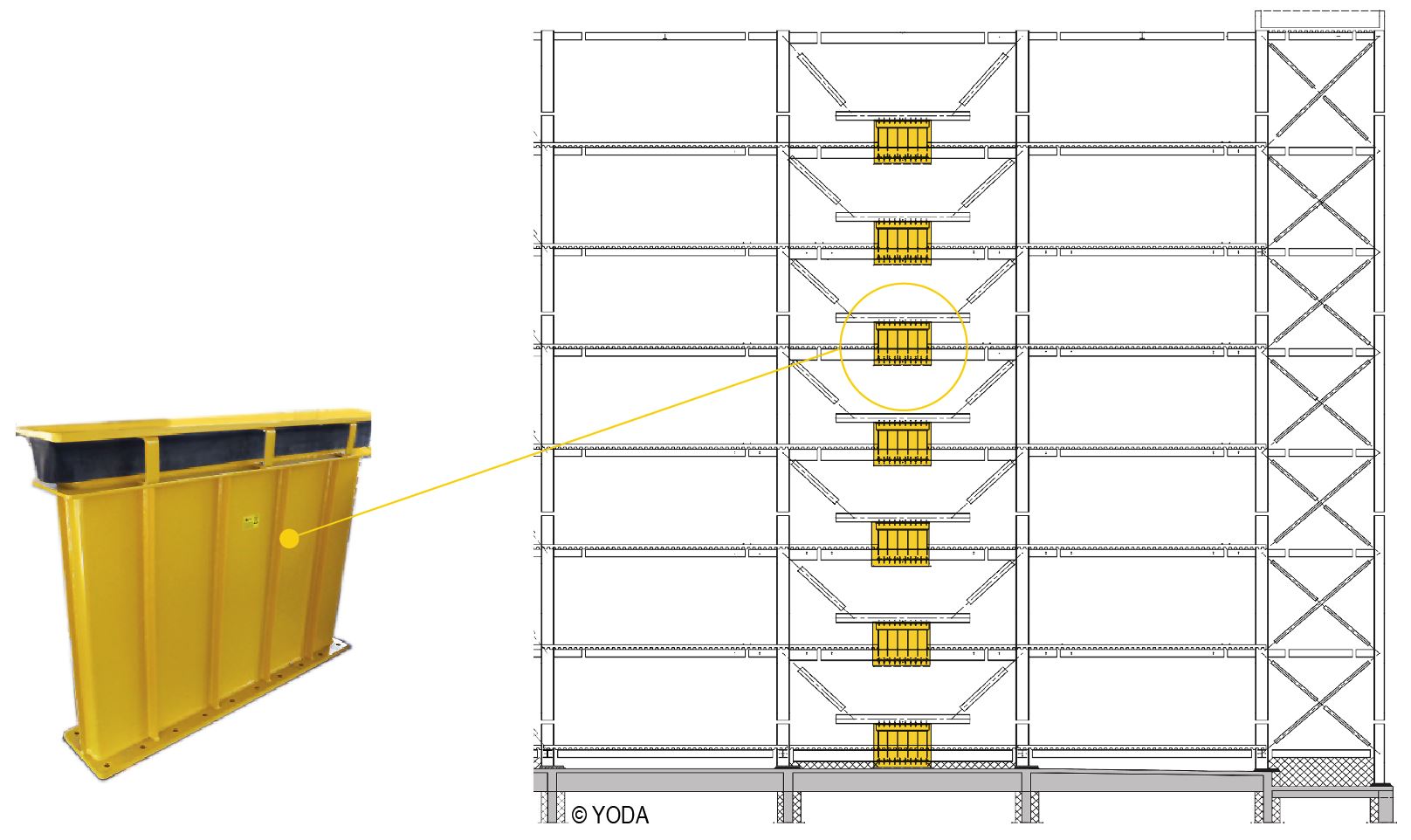
To address this limitation, the project team decided to focus on increasing structural damping to improve seismic behavior. Various possibilities for achieving this increase were explored, as described
in [2]. Tuned mass systems are one typical mitigation measure to improve the seismic behavior, but here this application was not the optimum one, as very large relative displacements between steel structure and tuned mass would have been expected due to the extreme low stiffness of the new steel structure. Ultimately, the team opted to incorporate GERB Viscous Wall Dampers within the new steel structure.
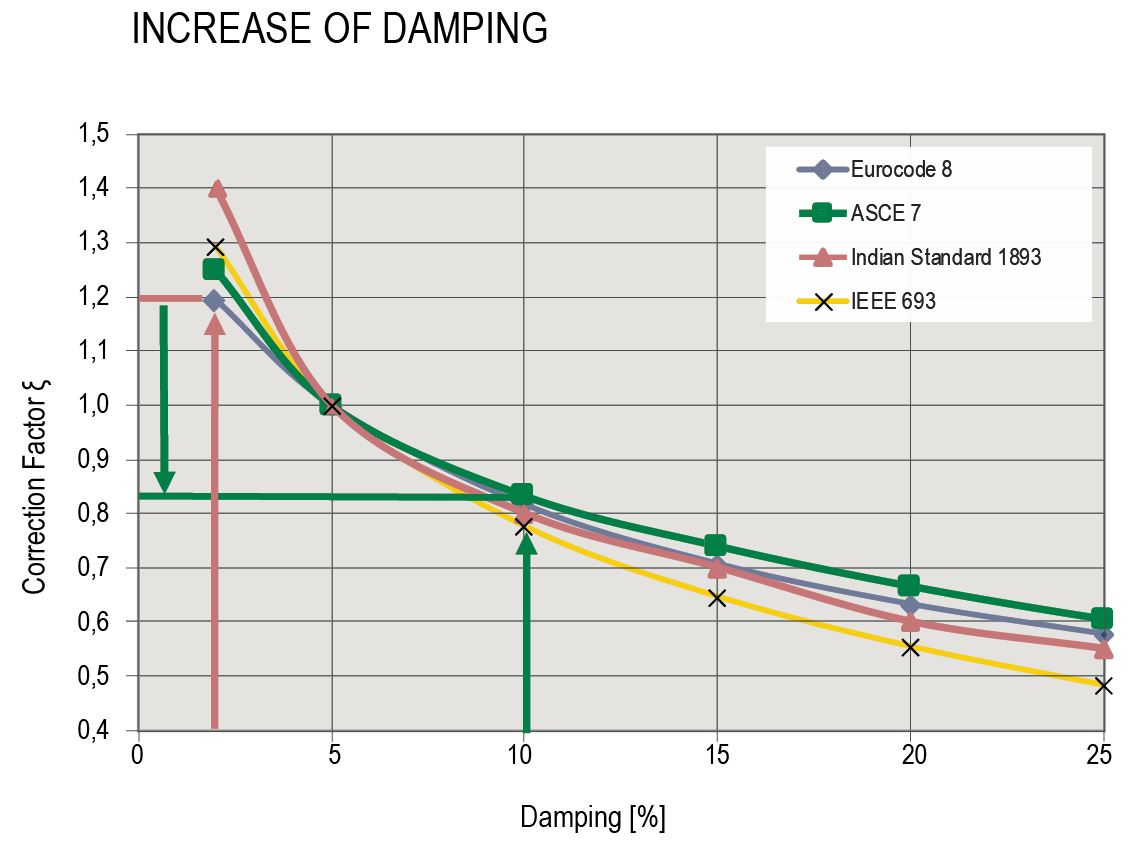
Result
The project team utilized three-dimensional finite element modeling to analyze the effectiveness of the damper arrangement. The preliminary analyses show a remarkable 50% reduction in seismic shear forces for one typical existing column. Encouraged by these promising results, the detailed design of the building was executed. In the end, the decision was made to slightly increase the number of dampers to 21 devices.
As discussed in [1], the successful implementation of the dampers allowed the project to achieve two primary objectives. Firstly, the seismic relative displacements were significantly reduced, preventing any potential impact on adjacent buildings. Secondly, the effect of seismic forces on the existing structural members was minimized, ensuring their stability and longevity.
In 2016, the construction works were completed, and the luxurious hotel underwent its transformation. Since 2018, the hotel proudly became part of the IHG group, solidifying its position as a high-end establishment in Sofia, Bulgaria.
The success of this luxury upgrade project serves as a remarkable example of how structural engineers can focus on earthquake protection while revitalizing and expanding existing buildings to meet modern demands by the increase of structural damping.
[1] Milev, J., Filatova, D., Milev, N., Toteva, A., Georgiev, G., Dyulgerov, P.: Application of Viscous Wall Dampers for the extension of Radisson Hotel in Sofia (in Bulgarian). In: 1st Scientific Applied Conference with International Participation, Reinforced Concrete and Masonry Structures – Theory and Practice, pp. 1–10. University Sofia, Sofia, Bulgaria (2015).
[2] Nawrotzki, P., Siepe, D., Bottoni, F.: Modern systems for wind & seismic induced vibrations. In: Cimellaro, G.P. (eds) Seismic Isolation, Energy Dissipation and Active Vibration Control of Structures. WCSI 2022. Lecture Notes in Civil Engineering, vol 309. Springer, Cham.
https://doi.org/10.1007/978-3-031-21187-4_78, (2022).
Further Resources
You need further information on this topic?
Please do not hesitate to contact us with your individual question.
One of our project engineers will get back to you shortly.
Upgrade of a Hotel in Sofia with GVWD
From a two story high class hotel to a two plus seven story luxury residence with GERB Viscous Wall Damper for increased earthquake protection.
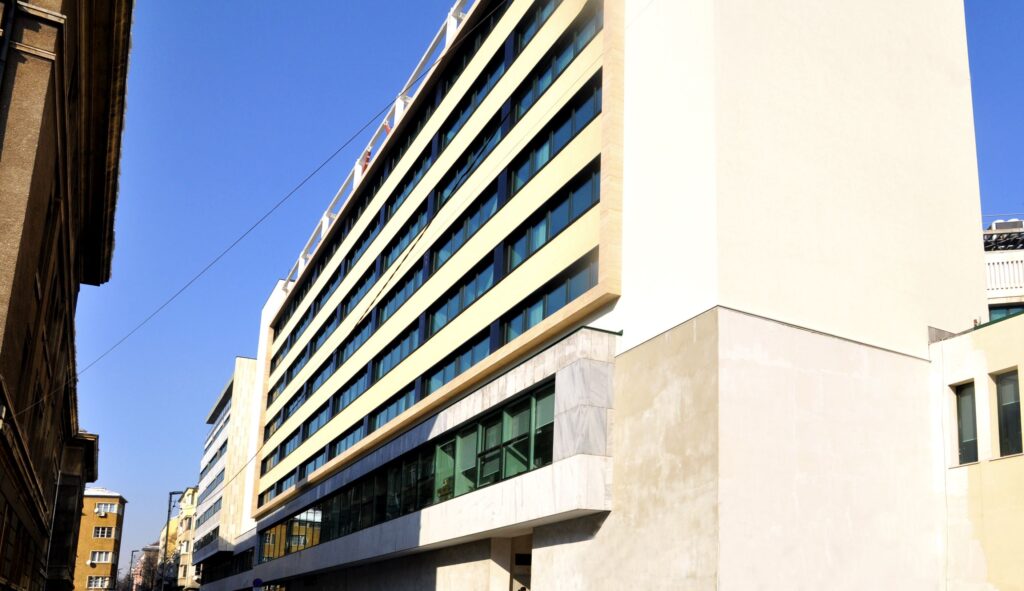
The hotel in Sofia, Bulgaria, is a modern establishment with stunning views of the renowned Alexandar Nevski Cathedral, overlooking the Narodno Sabranie Square. Positioned at the heart of the Bulgarian capital, the hotel boasts close proximity to key government buildings, cultural landmarks, and convenient access to the business district.
Originally constructed in the 1960s as a two-story hotel with a reinforced concrete frame structure, the hotel owner sought to upgrade and expand its bed capacity by adding a seven-story steel structure. However, the seismic standards mandated thorough investigations of both the new and existing structures to withstand earthquake loads.
More information can be taken from: http://www.yoda-bg.com/portfolio/radisson-blu-grand-hotel/nggallery/page/1
Upgrade of a Hotel in Sofia with GVWD
From a two story high class hotel to a two plus seven story luxury residence with GERB Viscous Wall Damper for increased earthquake protection.
The hotel in Sofia, Bulgaria, is a modern establishment with stunning views of the renowned Alexandar Nevski Cathedral, overlooking the Narodno Sabranie Square. Positioned at the heart of the Bulgarian capital, the hotel boasts close proximity to key government buildings, cultural landmarks, and convenient access to the business district.
Originally constructed in the 1960s as a two-story hotel with a reinforced concrete frame structure, the hotel owner sought to upgrade and expand its bed capacity by adding a seven-story steel structure. However, the seismic standards mandated thorough investigations of both the new and existing structures to withstand earthquake loads.
More information can be taken from:
http://www.yoda-bg.com/portfolio/radisson-blu-grand-hotel/nggallery/page/1

Challenge
The primary challenge faced during the luxury upgrade project was the need to reduce seismic forces acting on the existing structural members. The original building lacked detailed seismic investigations, making it necessary to address the seismic safety of the new and existing structures. The existing columns required reinforcement, but the available space for local reinforcement measures was limited. Moreover, the addition of vertical steel connections and reinforced concrete jackets to strengthen the structure was restricted due to space constraints.
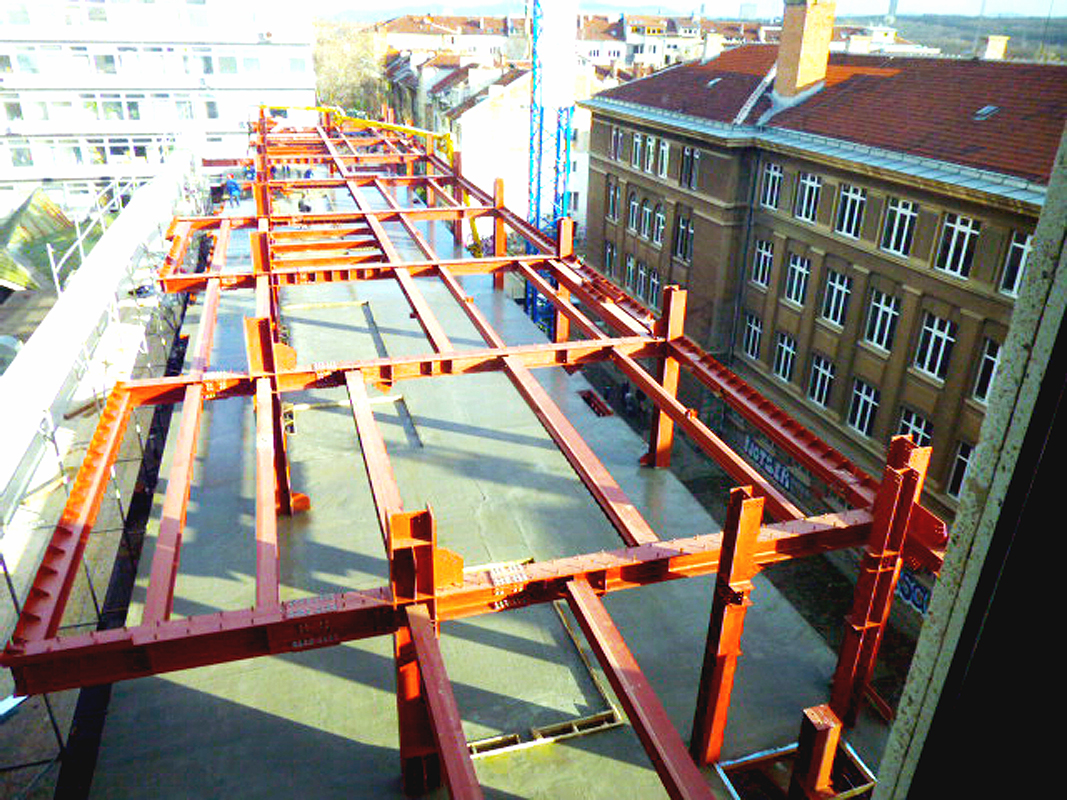

Challenge
The primary challenge faced during the luxury upgrade project was the need to reduce seismic forces acting on the existing structural members. The original building lacked detailed seismic investigations, making it necessary to address the seismic safety of the new and existing structures. The existing columns required reinforcement, but the available space for local reinforcement measures was limited. Moreover, the addition of vertical steel connections and reinforced concrete jackets to strengthen the structure was restricted due to space constraints.

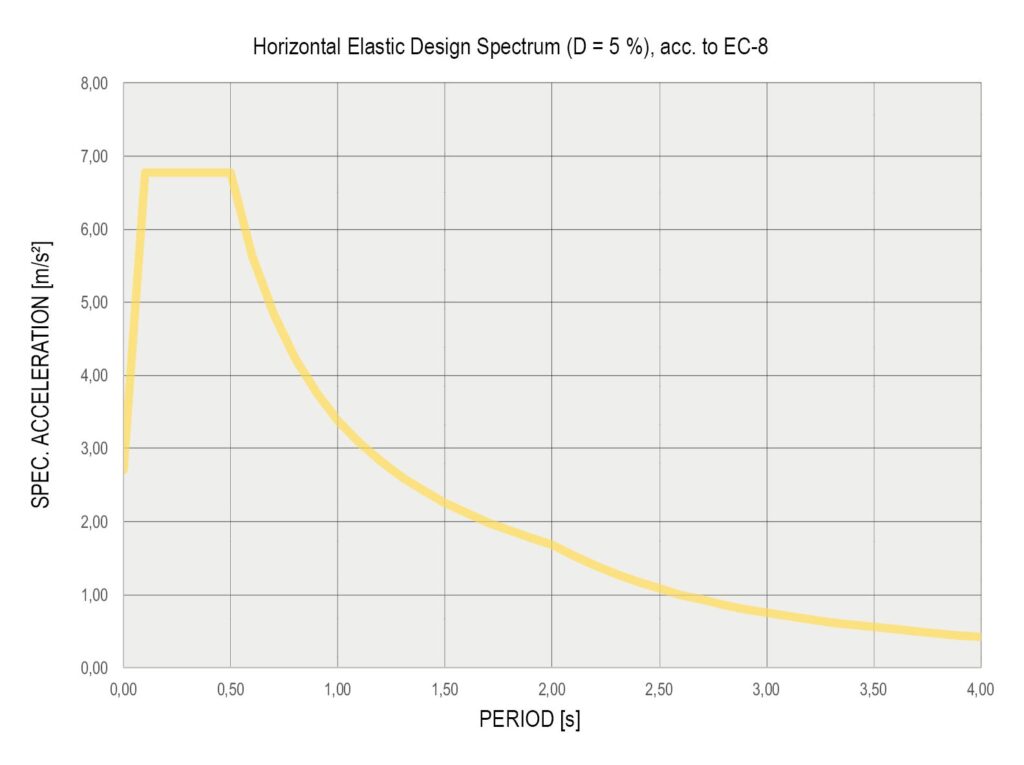
Solution
Technical Facts:
Structure: Steel construction
Vibration source: Seismic
GERB solution: 21 GERB Viscous Wall Damper
Completion: 2016

The project team proposed an innovative solution to enhance seismic behavior and reduce seismic forces. Firstly, vertical steel connections were integrated into the existing reinforced concrete frames. This approach was presented in [1]. Additionally, the main columns received additional reinforcement through reinforced concrete jackets. However, due to limited space for these retrofitting measures, it was challenging to achieve the desired level of structural stability.
To address this limitation, the project team decided to focus on increasing structural damping to improve seismic behavior. Various possibilities for achieving this increase were explored, as described in [2]. Tuned mass systems are one typical mitigation measure to improve the seismic behavior, but here this application was not the optimum one, as very large relative displacements between steel structure and tuned mass would have been expected due to the extreme low stiffness of the new steel structure. Ultimately, the team opted to incorporate GERB Viscous Wall Dampers within the new steel structure.
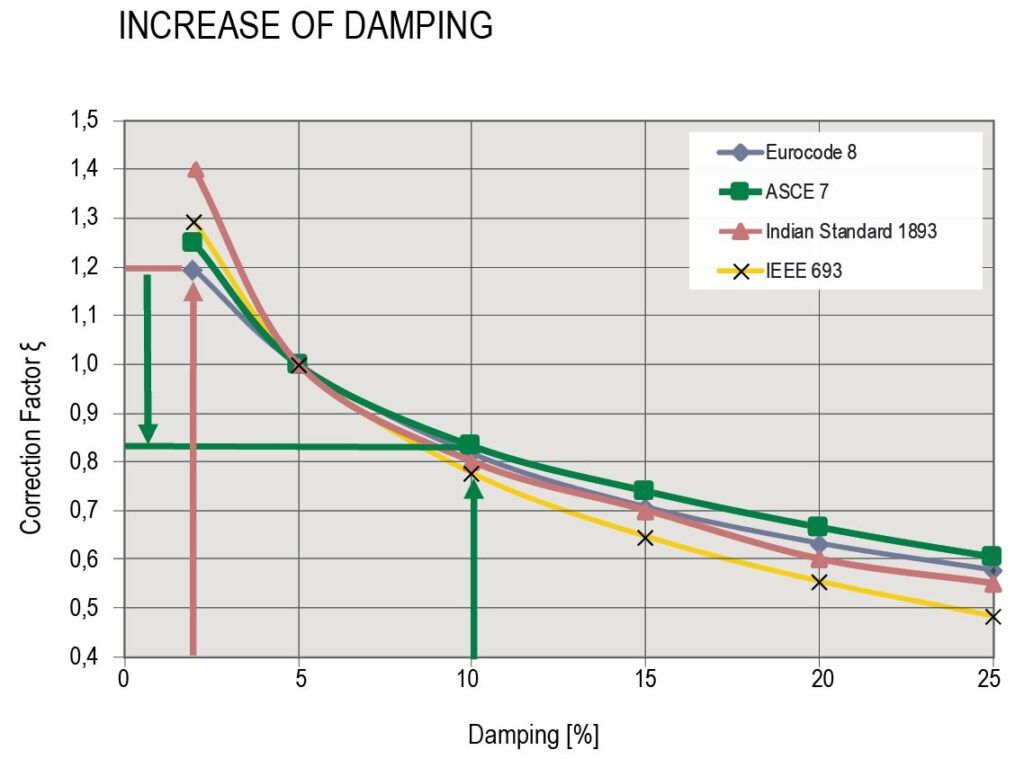
Result
The project team utilized three-dimensional finite element modeling to analyze the effectiveness of the damper arrangement. The preliminary analyses show a remarkable 50% reduction in seismic shear forces for one typical existing column. Encouraged by these promising results, the detailed design of the building was executed. In the end, the decision was made to slightly increase the number of dampers to 21 devices.
As discussed in [1], the successful implementation of the dampers allowed the project to achieve two primary objectives. Firstly, the seismic relative displacements were significantly reduced, preventing any potential impact on adjacent buildings. Secondly, the effect of seismic forces on the existing structural members was minimized, ensuring their stability and longevity. In 2016, the construction works were completed, and the luxurious hotel underwent its transformation. Since 2018, the hotel proudly became part of the IHG group, solidifying its position as a high-end establishment in Sofia, Bulgaria.
The success of this luxury upgrade project serves as a remarkable example of how structural engineers can focus on earthquake protection while revitalizing and expanding existing buildings to meet modern demands by the increase of structural damping.
[1] Milev, J., Filatova, D., Milev, N., Toteva, A., Georgiev, G., Dyulgerov, P.: Application of Viscous Wall Dampers for the extension of Radisson Hotel in Sofia (in Bulgarian). In: 1st Scientific Applied Conference with International Participation, Reinforced Concrete and Masonry Structures – Theory and Practice, pp. 1–10. University Sofia, Sofia, Bulgaria (2015).
[2] Nawrotzki, P., Siepe, D., Bottoni, F.: Modern systems for wind & seismic induced vibrations. In: Cimellaro, G.P. (eds) Seismic Isolation, Energy Dissipation and Active Vibration Control of Structures. WCSI 2022. Lecture Notes in Civil Engineering, vol 309. Springer, Cham.
https://doi.org/10.1007/978-3-031-21187-4_78, (2022).
Solution
The project team proposed an innovative solution to enhance seismic behavior and reduce seismic forces. Firstly, vertical steel connections were integrated into the existing reinforced concrete frames. This approach was presented in [1]. Additionally, the main columns received additional reinforcement through reinforced concrete jackets. However, due to limited space for these retrofitting measures, it was challenging to achieve the desired level of structural stability.
Technical Facts:
Structure: Steel Construction
Vibration source: Seismic
Solution: 21 GERB Viscous Wall Damper (GVWD)
Completion: 2016

To address this limitation, the project team decided to focus on increasing structural damping to improve seismic behavior. Various possibilities for achieving this increase were explored, as described
in [2]. Tuned mass systems are one typical mitigation measure to improve the seismic behavior, but here this application was not the optimum one, as very large relative displacements between steel structure and tuned mass would have been expected due to the extreme low stiffness of the new steel structure. Ultimately, the team opted to incorporate GERB Viscous Wall Dampers within the new steel structure.

Result
The project team utilized three-dimensional finite element modeling to analyze the effectiveness of the damper arrangement. The preliminary analyses show a remarkable 50% reduction in seismic shear forces for one typical existing column. Encouraged by these promising results, the detailed design of the building was executed. In the end, the decision was made to slightly increase the number of dampers to 21 devices.
As discussed in [1], the successful implementation of the dampers allowed the project to achieve two primary objectives. Firstly, the seismic relative displacements were significantly reduced, preventing any potential impact on adjacent buildings. Secondly, the effect of seismic forces on the existing structural members was minimized, ensuring their stability and longevity.
In 2016, the construction works were completed, and the luxurious hotel underwent its transformation. Since 2018, the hotel proudly became part of the IHG group, solidifying its position as a high-end establishment in Sofia, Bulgaria.
The success of this luxury upgrade project serves as a remarkable example of how structural engineers can focus on earthquake protection while revitalizing and expanding existing buildings to meet modern demands by the increase of structural damping.
[1] Milev, J., Filatova, D., Milev, N., Toteva, A., Georgiev, G., Dyulgerov, P.: Application of Viscous Wall Dampers for the extension of Radisson Hotel in Sofia (in Bulgarian). In: 1st Scientific Applied Conference with International Participation, Reinforced Concrete and Masonry Structures – Theory and Practice, pp. 1–10. University Sofia, Sofia, Bulgaria (2015).
[2] Nawrotzki, P., Siepe, D., Bottoni, F.: Modern systems for wind & seismic induced vibrations. In: Cimellaro, G.P. (eds) Seismic Isolation, Energy Dissipation and Active Vibration Control of Structures. WCSI 2022. Lecture Notes in Civil Engineering, vol 309. Springer, Cham.
https://doi.org/10.1007/978-3-031-21187-4_78, (2022).
Share this post
Further Resources
You need further information on this topic?
Please do not hesitate to contact us with your individual question.
One of our project engineers will get back to you shortly.
Further Resources
You need further information on this topic?
Please do not hesitate to contact us with your individual question.
One of our project engineers will get back to you shortly.